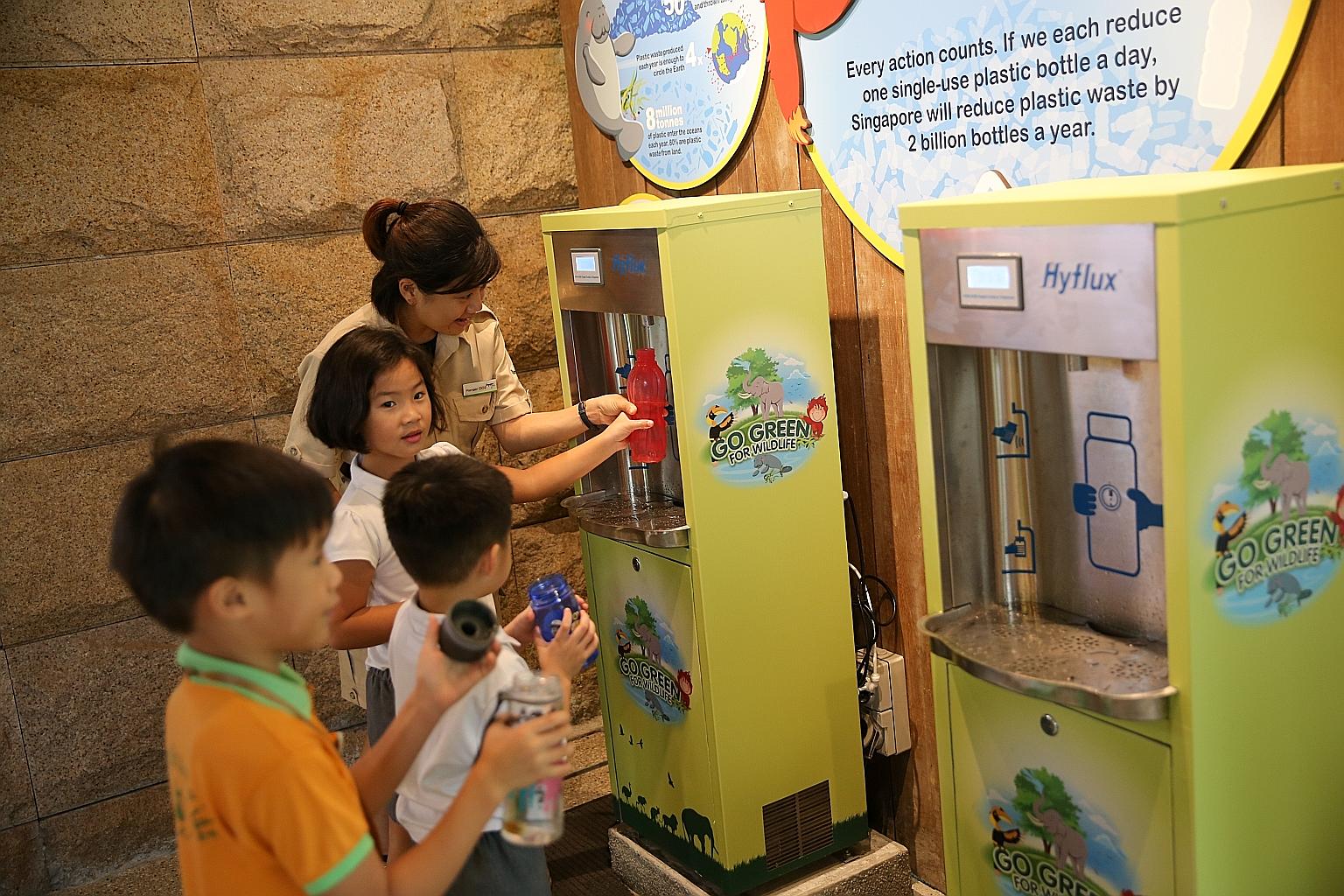Working to put a cap on plastic bottle waste
There are now 13 environmentally-friendly water dispensers at S'pore Zoo, River Safari
Sign up now: Get ST's newsletters delivered to your inbox

"Ranger Ooz", Singapore Zoo's advocate for reducing waste, guides pre-school children as they refill their water bottles at the water dispenser developed by Hyflux.
ST PHOTO: ONG WEE JIN
Lin Yangchen
Follow topic:
It is usually bad news when a company reports that sales have gone down. Not so where plastic bottles are concerned.
Sales of bottled drinks have dropped since new water dispensers were introduced at the Singapore Zoo and River Safari, both operated by Wildlife Reserves Singapore (WRS).
Mr Mike Barclay, group chief executive of WRS' holding company Mandai Park Holdings, said: "Single-use bottles are a major polluter... It's the right thing to do for the environment, so we're comfortable with that."
WRS also runs the Night Safari and Jurong Bird Park.
In partnership with WRS, Hyflux developed an exclusive water dispenser that produces potable water by ultrafiltration and automatically dispenses water when an infrared sensor detects a bottle.
A screen displays the daily count of disposable bottles saved.
In Singapore, 824,600 tonnes of plastic waste was generated last year, of which 7 per cent was recycled, according to the National Environment Agency.
WRS said 13 of the water dispensers have been installed at the Singapore Zoo and River Safari. There are plans for more, but visitors' needs will be evaluated before proceeding further.
Yesterday Mr Barclay announced the use of the water dispensers as part of WRS Go Green For Wildlife Campaign, in partnership with water and energy technology company Hyflux. The campaign aims to convey the message of environmental sustainability to the public.
Mr Barclay said WRS hopes members of the public will adopt sustainable practices as part of their lifestyle, and in turn champion the sustainability cause.
Ms Olivia Lum, Hyflux's executive chairman and group chief executive, said: "This partnership is in line with our sustainable business approach and we look forward to playing our part to help conserve the environment."
WRS is reaching out to the younger generation as well. Last month, it held a Creative Trash competition in which pre-schoolers created artwork out of plastic bottles and other kinds of waste. The winning entries were shown to the media yesterday.
The first prize went to the Kids' Kingdom Child Development and Learning Centre, whose pupils made a box featuring an underwater scene with corals and fish.
The box included a hammerhead shark made by second-year kindergarten pupil Tin Jun Heng, six, who was inspired by a TV show about the creature.
He used a toilet roll for the shark's distinctive head, and a plastic bottle for its body.
Jun Heng's art teacher Veronica Hoo, 45, said: "He's very creative and came up with the idea himself. No one else made anything like it."
A 2014 United Nations Environment Programme report said plastic waste caused financial damage of US$13 billion (S$18.6 billion) to marine ecosystems every year.

